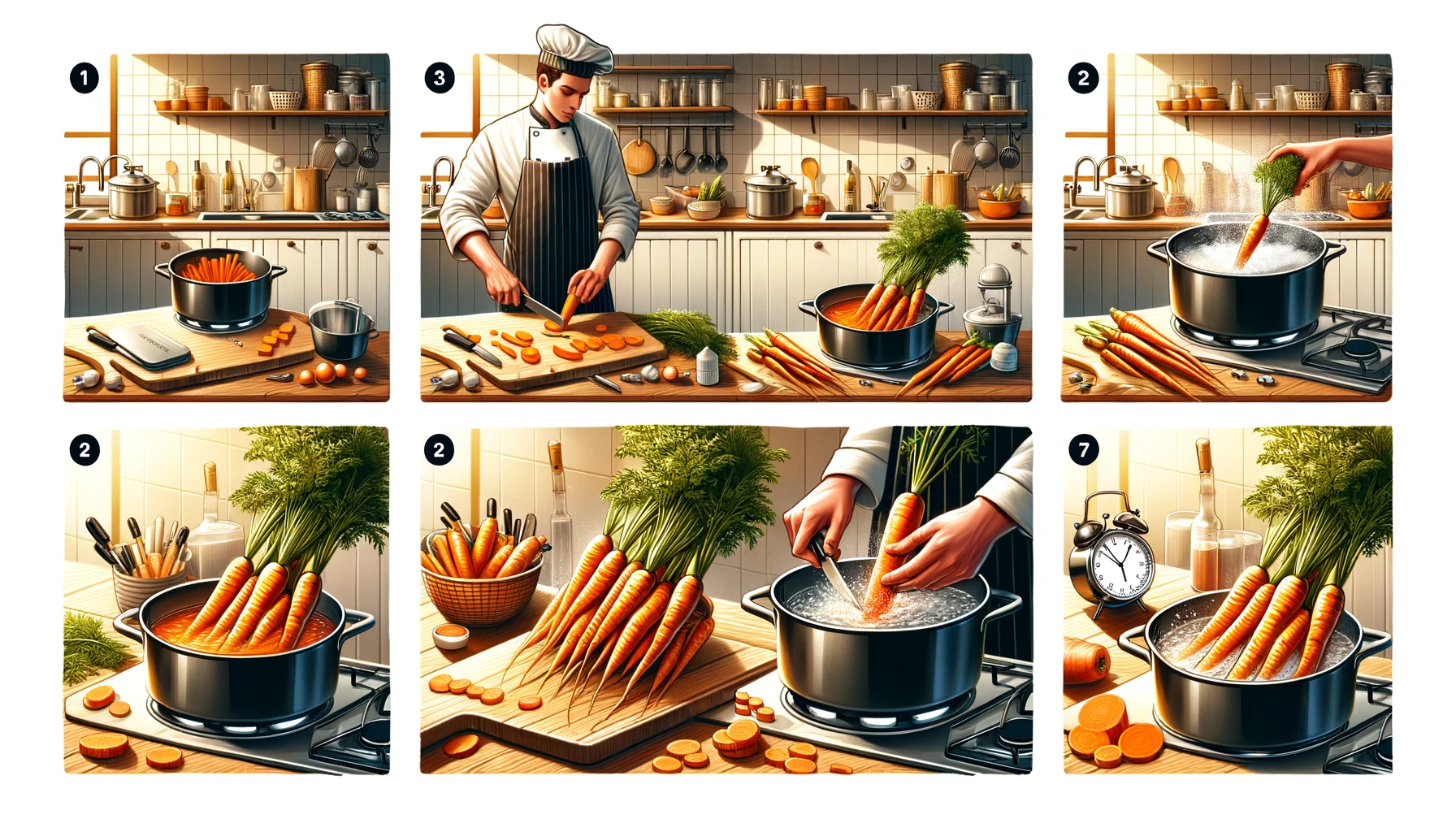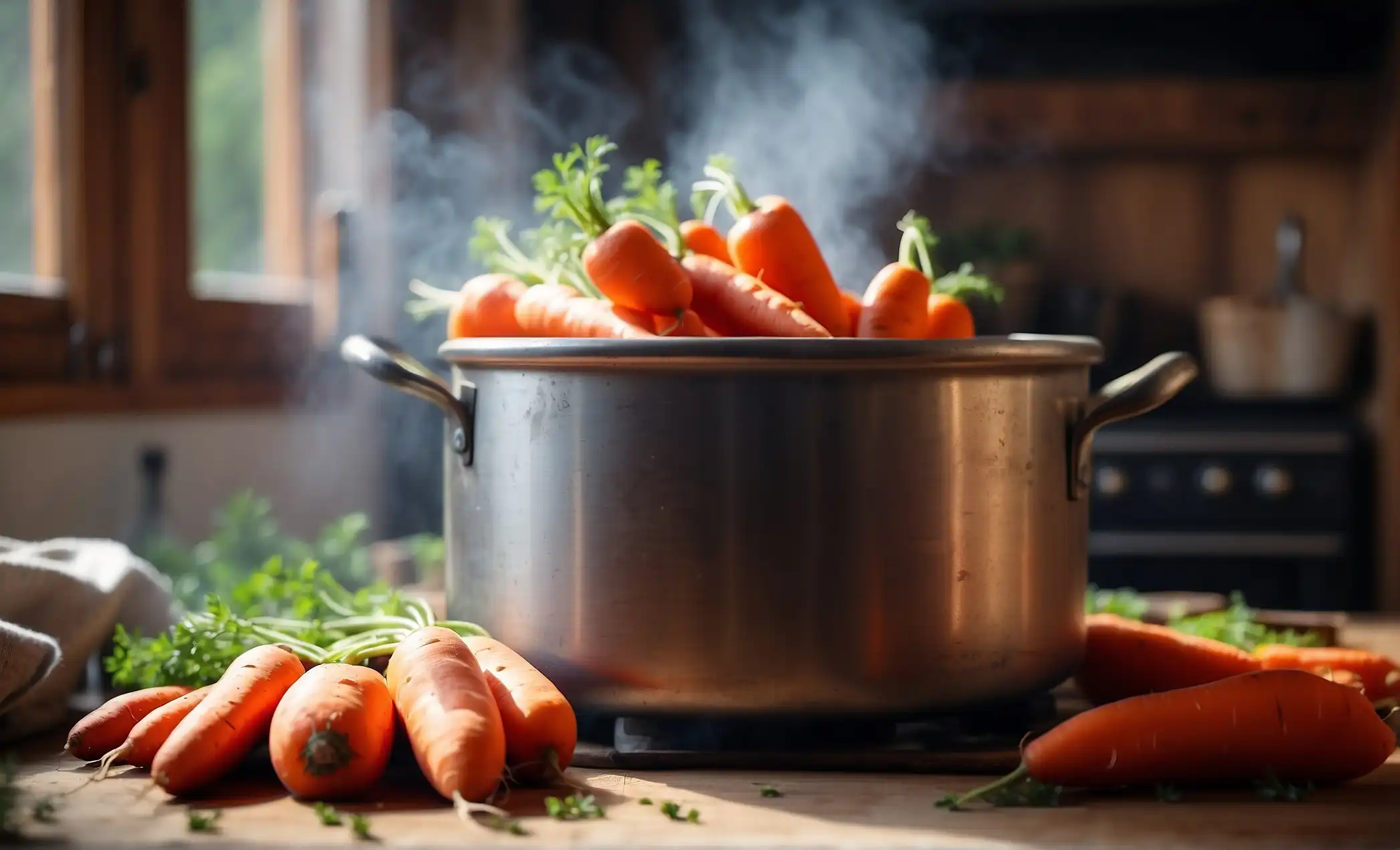To soften carrots, peel and slice them, then boil in water for 4-5 minutes until they reach your desired level of tenderness.
Carrots, known for their nutritional benefits and versatility in cooking, often require softening for various recipes. This process is straightforward and can be accomplished through multiple cooking methods. Choosing the right softening technique can impact not only the texture but also the flavor and nutritional content of the carrots.
Whether you are preparing a savory stew or a sweet carrot cake, softened carrots are a key ingredient. By following a few simple steps, one can ensure perfectly tender carrots, suitable for mashing, blending, or as a soft addition to any dish. The goal is to achieve the desired tenderness without losing the vibrant color and nutrients that make carrots a staple in healthy eating.
About Carrot Texture
Carrot texture plays a crucial role in both cooking and enjoying this versatile vegetable. Whether you’re aiming to create a smooth carrot puree, a crunchy salad topping, or a perfectly tender side dish, the ultimate texture of your carrots hinges on proper preparation. Understanding the inherent properties of carrots and applying precise cooking techniques can transform this root vegetable into a culinary delight.
Understanding Carrot Composition
At the cellular level, carrots are composed of cellulose, hemicellulose, and pectin. These structural carbohydrates give carrots their firmness and crunchiness. The ratio and condition of these components determine how soft or hard a carrot will feel when bitten into. Proper cooking methods can modify these structures, leading to the desired texture. Here’s a quick glimpse into its makeup:
- Cellulose: Gives carrots structural strength.
- Hemicellulose: Works with cellulose to maintain firmness.
- Pectin: Acts as a natural glue between cells.
Factors That Affect Carrot Hardness
Several factors can influence how hard or soft a carrot is, directly impacting how you might want to soften it. These factors range from the carrot’s age and storage conditions to the cooking method applied. Young, fresh carrots tend to be more tender, while older ones usually require longer cooking times to soften.
| Factor | Impact on Hardness |
|---|---|
| Carrot Age | Older carrots are typically harder. |
| Soil Conditions | Optimal growing conditions lead to a perfect balance in firmness. |
| Storage | Prolonged storage can dehydrate carrots, making them tougher. |
| Cooking Methods | Boiling, steaming, or slow-cooking can effectively soften carrots. |
It’s essential to consider these factors to achieve your desired carrot texture. A well-thought-out approach tailored to these variables can render even the firmest carrots tender and palatable.
Preparation Methods for Softening Carrots
Transforming rigid carrots into succulent slices or delicate dices is a culinary art that begins with proper preparation. Softening carrots is a quintessential step for an array of dishes, from sumptuous stews to refreshing salads. The right softening technique can elevate the texture and flavor of your meal to sheer perfection. Here’s how to master the carrot softening process with ease.
Peeling and Cutting Techniques
Start by selecting fresh carrots with a crisp snap to ensure the best outcome. Wash and peel the carrots thoroughly to remove any dirt and the outer layer, which can be tough. A vegetable peeler will do the job swiftly and efficiently. Follow this with meticulous cutting – slices, cubes, or julienne – to guarantee an even cook throughout. Below, find the steps for ideal cutting:
- Trim off the tops and bottoms of the carrots.
- Peel using downward strokes with your peeler.
- Cut to uniform sizes for consistent softening.
Remember that smaller pieces soften faster than larger chunks, helping save time and energy.
The Role of Salt in Softening Carrots
Salt isn’t just a flavor enhancer – it’s a vegetable wizard. When added to the cooking water, salt works to break down the cell walls of the carrots, aiding in the softening process. The process of osmosis draws moisture out of the carrots, allowing them to cook more thoroughly. A pinch of salt can make a significant difference:
- Boil carrots in salted water for a tender texture.
- Sprinkle salt while sautéing to expedite softening.
- Use 1 teaspoon of salt per liter of water as a general guideline.
Marinating Carrots for Tenderness
Marinating is an exemplary technique to infuse flavors and soften carrots before cooking. A well-composed marinade, featuring acids like vinegar or lemon juice, softens the carrots, making them pliable and full of zest. Follow these simple steps to marinate your carrots:
- Prepare a marinade with your choice of acids, oils, and herbs.
- Common acids: balsamic vinegar, white wine vinegar, or lemon juice.
- Pair with olive oil, sesame oil, or another oil of your preference.
- Add aromatic herbs and spices like thyme, rosemary, or garlic.
- Cut carrots into your desired shape and combine with the marinade.
- Allow to rest for at least 30 minutes, or longer for deeper flavor.
This method is particularly suited for dishes where carrots are served cold, such as in salads or as a tangy side dish.
Cooking Techniques to Soften Carrots
Transforming the hearty crunch of raw carrots into a deliciously tender bite is simple with the right cooking technique. Whether you are looking to create the perfect side dish or to incorporate carrots into a recipe, understanding how to soften them correctly can make all the difference in texture and taste.

Enlisting various methods such as boiling, steaming, sautéing, baking, and slow cooking, discover the secrets to perfectly softened carrots every time.
Boiling: Time and Temperature Controls
Boiling is a straightforward method to soften carrots. Here’s how to achieve the perfect texture:
- Fill a pot with enough water to cover the carrots.
- Bring water to a boil and add a pinch of salt.
- Submerge the peeled and sliced carrots into the boiling water.
- Cook for about 4 to 5 minutes for slices or 10 to 15 minutes for whole carrots.
- Remember to check for desired tenderness with a fork.
Steaming: Preserving Nutrients While Softening
Steaming is a highly nutritious method of softening carrots that preserves their natural flavors and vitamins:
- Use a steamer basket over a pot of boiling water.
- Place the carrots in the basket; cover and let them steam.
- Typically, it takes about 5 to 10 minutes for sliced carrots.
- Check doneness by piercing with a fork; steam longer for softer carrots.
Sautéing: Quick Method for Tender-Crisp Carrots
For a faster approach that gives a tender-crisp result:
| Step | Action |
|---|---|
| 1 | Heat oil or butter in a pan over medium heat. |
| 2 | Add sliced carrots; stir frequently. |
| 3 | Cook for about 6 to 7 minutes until they are softened yet crisp. |
Baking: Achieving Softness with Dry Heat
To soften carrots in the oven, follow these steps:
- Preheat the oven to 375°F (190°C).
- Toss carrots with oil, salt, and your favorite seasonings.
- Spread evenly on a baking sheet and place in the oven.
- Bake for 20 to 25 minutes or until they reach the desired softness.
- Stir the carrots halfway through for even cooking.
Slow Cooking: Infusing Flavors During Softening
Slow cooking is ideal for infusing carrots with nuanced flavors while softening:
- Peel and slice carrots, then add them to your slow cooker.
- Include broths, herbs, and spices for extra flavor.
- Cover and cook on low heat for 4 to 6 hours.
- Carrots should turn very soft, fully absorbing the flavors of the slow cooker contents.
Learn more: When to Plant Carrots in Oregon
Serving and Storing Softened Carrots
After transforming those hard, crunchy carrots into soft, palatable delights, it’s essential to serve them at their best and store any leftovers correctly to maintain their delectable texture and flavor. Ensuring your carrots remain a culinary highlight whether they’re served immediately or enjoyed as a tasty leftover requires a few best practices which are both simple and effective.
Best Practices for Serving Softened Carrots
Softened carrots shine as a versatile side dish that can enhance the overall dining experience. Here are some tips to ensure that these softened veggies make an outstanding impression:
- Temperature is key: Serve carrots warm to maximize their flavor and texture.
- Garnishing: Add a sprinkle of fresh herbs, a dash of spice, or a drizzle of honey to elevate the dish.
- Combining textures: Mix in some nuts or seeds for a delightful crunch that complements the soft carrots.
Storing and Reheating Softened Carrots
Maintaining the quality of softened carrots calls for proper storage and reheating techniques. Below is a guide to ensure your carrots stay as delicious as when they were first cooked:
| Action | Instructions |
|---|---|
| Cooling Down | Let carrots come to room temperature before storing. |
| Refrigeration | Store in an airtight container and refrigerate for up to 5 days. |
| Freezing | For longer storage, freeze in airtight bags or containers for up to 3 months. |
| Reheating | Reheat gently in a microwave or on the stove with a bit of water or butter to restore moisture and flavor. |
Ensuring that your softened carrots are both pleasant to eat and safe to store doesn’t require much effort. Serve them with thought, store them with care, and enjoy the fruits of your labor both today and in future meals.
Know more: How Many Carrots Do I Need to Eat to Improve My Eyesight
Conclusion
Softening carrots is simpler than you might think. Whether blanched, roasted, or steamed, your veggies can achieve perfect tenderness. Remember, freshness and cut size impact cooking time. Experiment with these methods and find your favorite texture. Crisp or tender, carrots add a sweet, nutritious touch to any meal.
Turn your carrot aspirations into reality. Follow Farm Pioneer and let our Carrots section guide you through the nuances of carrot cultivation. Happy cooking!
